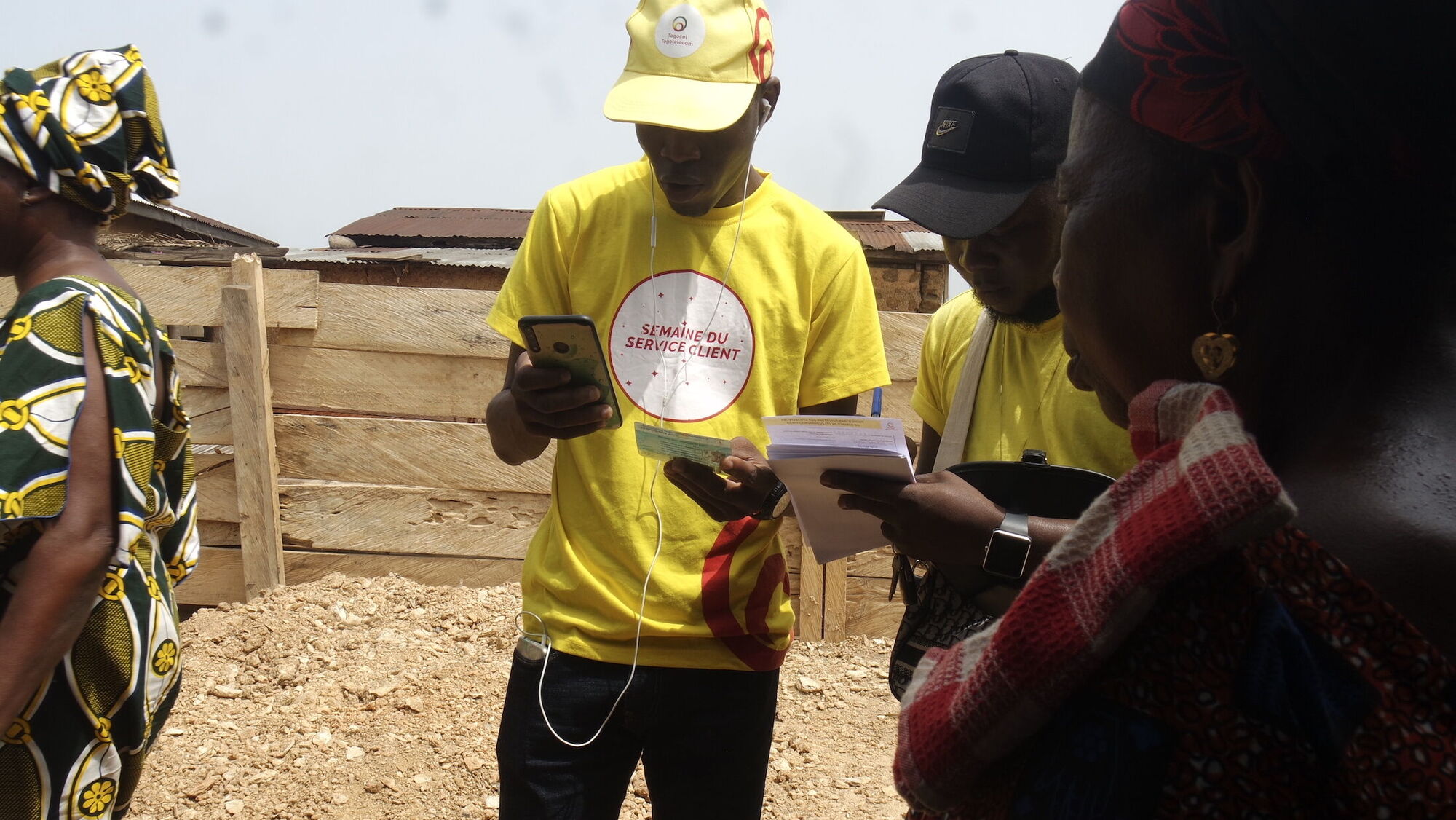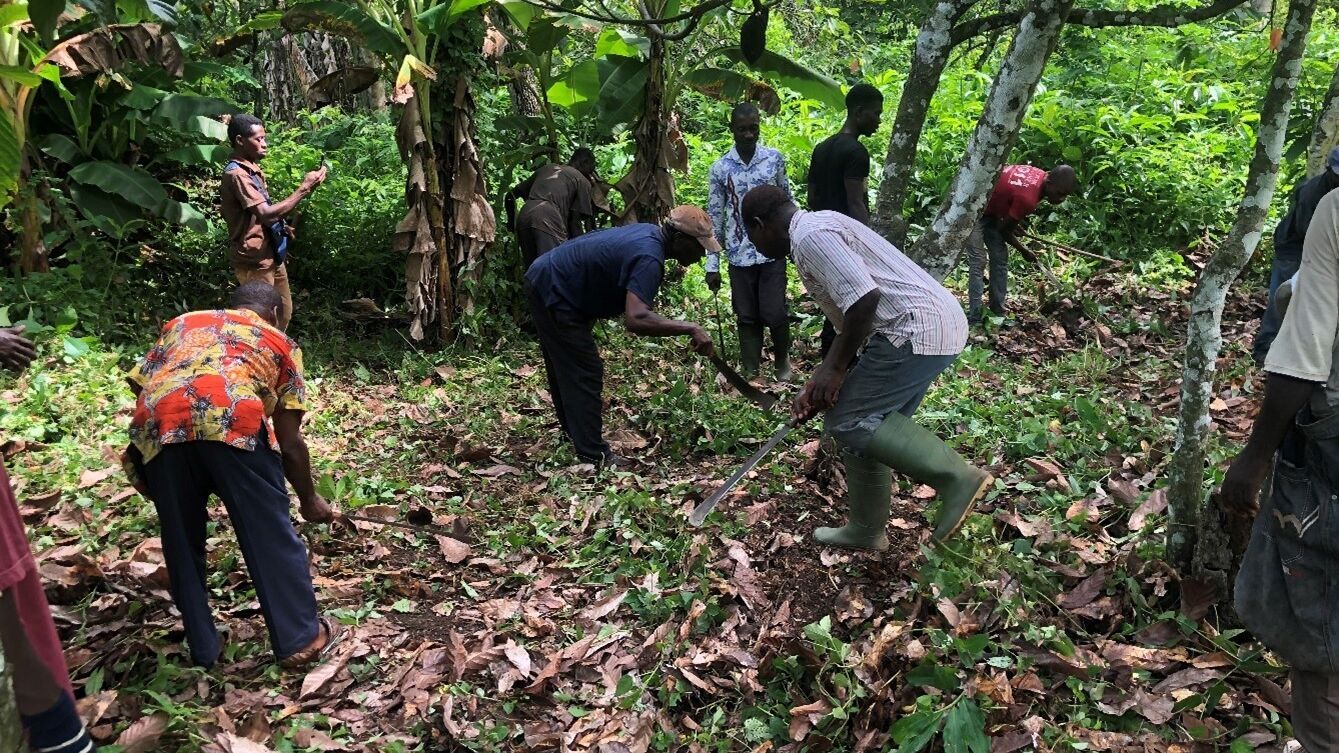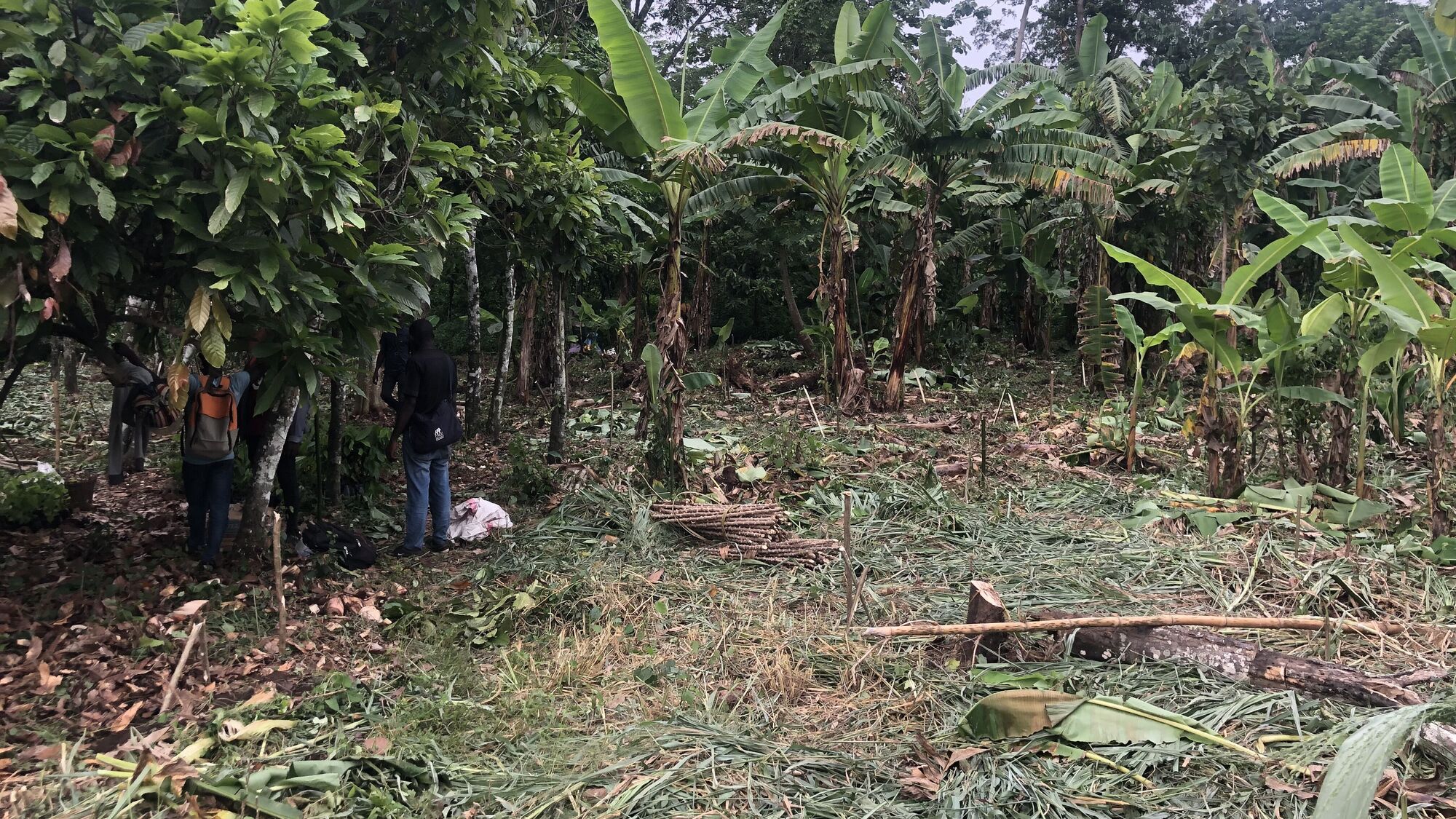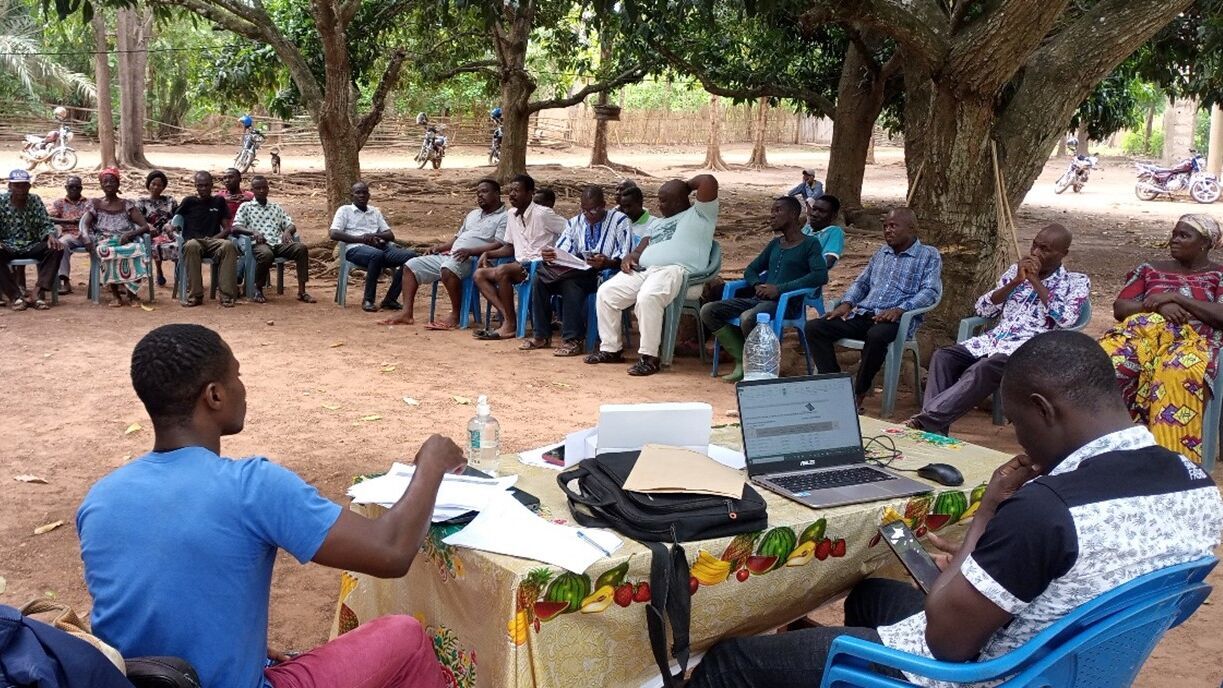Innovative approaches to organic cocoa farming
What the project was about
gebana sources all its cocoa in Togo from organic producers. To modernise the production and to ensure the long-term stability of the organic cocoa value chain in Togo, gebana undertook a variety of innovative approaches. This included 1) the digitalisation of supply chain traceability, farmer information and payments, 2) the implementation of innovations in agricultural practices and farm management, and 3) the testing of innovative financial models for financing individual farmers.
What was done
The following activities were undertaken:
- A digitalisation tool (SmartFarm) with a farmer data and purchase module and functions for Internal Control System (ICS) surveys and activity monitoring was successfully implemented. The aim was to strengthen traceability, transparency and organic integrity, and to facilitate farmer data management.
- Trainings on good agricultural practices and organic pest management were held. In addition, with the support of an Ecotop expert, farmers were introduced to the dynamic agroforestry (DAF) approach. Demonstration plots were established and farmers were trained by gebana staff. The SmartFarm tool was used to document and monitor the implementation of agroforestry practices and its impact on farmers’ income.
- In addition to the purchasing price (incl. the organic premium), all farmers received a 10 % share of the direct sales turnover from their processed product sold online by gebana.
What the project achieved
- Through the digitalisation of farmer data and payments, traceability was increased. 2’106 producers with 2’568 cocoa plots are currently registered in SmartFarm and about 50 staff members are using the software.
- 254 trainings on good agricultural practices with 3’336 participants were held. Nine field schools were set up to demonstrate good cocoa production practices, compost production and application, pruning and trimming cocoa trees, and copper oxide and neem oil application trials, which showed encouraging results.
- 10 gebana staff and 259 producers were trained in dynamic agroforestry practices, 8 demo plots were established.
- gebana distributed FCFA 12,250,255 (CHF 18’440, on average 37 CHF per producer) to 498 farmers in 2021 and 31’608’523 FCFA (approx. 50’000 CHF) to 665 producers (on average 75 CHF per producer) in 2022. In 2022, 91% (604 out of 665) of payments for these premiums were made by mobile payment.
- The project helped to increase access to prefinance for the farmers through microcredits from a microfinance institution that can rely on data from the SmartFarm tool. It developed a concept for a harvest fund based on crowd investment, which has not yet been implemented.
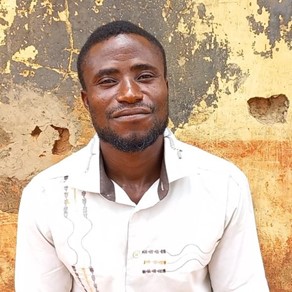
I own 4 hectares of land. Last year I had to take a loan for my farm. I have now used two-thirds of the 164,000 CFA [about 250 Euro] of the additional gebana premium to pay off that loan. gebana should try to create an even bigger market for organic cocoa.
What didn’t work or had unintended consequences
The implementation of mobile payments for purchases and premiums turned out to be more difficult than it appeared at first. Many of the farmers in rural Togo are reluctant to use mobile payments. Most of the encountered hurdles revolve around a lack of trust in mobile payment systems, limited availability of mobile money agents to withdraw cash (which still is the primary method of payment in rural Togo) and limited technical knowledge of the farmers to handle the application. The relatively high transaction costs are a major barrier to the use. For premiums, gebana paid a bonus for those who received it via mobile payment, resulting in 91% accepting it. For purchases, gebana cannot pay such a transaction fee as this would reduce competitiveness towards clients.
Further, some difficulties in the adoption of good agricultural practices were encountered. While composting tests showed positive effects on the cocoa plants, the lengthy process of compost production was mentioned as a barrier to adoption. Tree pruning and phytosanitary treatments required tools that producers often did not have access to. Farmers are often old, which makes it difficult to do tree pruning. Furthermore, the cost for setting up dynamic agroforestry plots is too high for farmers. This will need continued financial support.
Interview with gebana about the project
Mr. Michael Blaser, in what ways were the project’s approaches new and innovative?
The following three components of the project were new and innovative:
- Technical innovation: The use of smartphones in the relationship between the farmer and the buyer company was new in the cocoa sector in Togo. Two cooperatives will start using the software for managing their internal control system and farmer data. This data will be linked to gebana.
- Farm management innovation: Until the implementation of this project, the cocoa farmers gebana works with in Togo had never participated in agroforestry training. Expanding the focus beyond cocoa and diversifying the crops and learning ways to produce side products helps increase the income and resilience of farmers.
- Financial innovation: The approach of sharing a certain percentage of the turnover from the sales to the final consumers with the farmers is not a commonly used practice in the cocoa sector. This additional premium payment was made directly to the individual farmer.
What has gebana learned through the project?
While in theory, some improved farming practices should be beneficial to farmers, it does not necessarily mean they will adopt them. Some practices imparted to farmers as part of this project were not widely adopted for several reasons, including the age of farmers, availability of equipment and general reluctance of farmers to change their practices.
Further, introducing payments via mobile phone can be very difficult in a country where the use of mobile payment is not widely adopted in rural areas. It takes time to change behaviour. For purchases, it remains challenging, as we are competing with buyers who pay cash. It proved easier to convince farmers to accept mobile payments for gebana premium payments, as farmers are welcoming any additional income.
What do you recommend to other stakeholders implementing similar projects?
Before imparting practices, one should exchange with farmers about the practices: what are the practices about, what are the benefits, and understand whether they are of interest to farmers and why (not). It makes sense to prototype practices in a smaller scale to understand if proposed solutions are desired by farmers, economically viable, and technically feasible. If necessary, adapt the solution. Only once these goals are met go for scaling of the solution.
It is important to understand from the beginning why farmers are currently not using mobile payments and whether or not they might be willing to change. Once the barriers are understood, it can be assessed whether they can be overcome. Collaborating with the mobile phone companies to ensure that sufficient pay-out service providers are available, and to sensitise farmers on the benefits, was key to the success in mobile payments for gebana premiums. The benefits of mobile payments for purchases did not seem to be sufficient to convince the farmers.
What are the next steps?
We will continue to collaborate with the farmers which were involved in this project and will ensure follow-up activities for all three components of this project by:
- Providing refresher trainings for gebana’s field agents to improve their skills in recording production and collecting data in the SmartFarm application.
- Supporting farmers with organic pest management, as well as providing trainings on good agricultural practices.
- Expanding the support for dynamic agroforestry (DAF) by establishing 40 new plots in 2023 and promoting "DAF-light" practices such as pruning, mulching, and crop diversification.
- Continue using mobile payments for paying out premiums to farmers and testing if this can be done directly through the SmartFarm app in 2023.
- Facilitating contacts to financing institutions for other cooperatives in need of financing for issuing credits based on the information registered in SmartFarm.
How is it ensured that the project has not only short-term, but long-term effects?
gebana will continue its engagement with the farmers in Togo and thus ensure the long-term sustainability of the implemented approaches. gebana has several clients with commitments over several years for increasing volumes. This gives the basis for the work with the farmers on quality, yield and income.
Organisations involved


